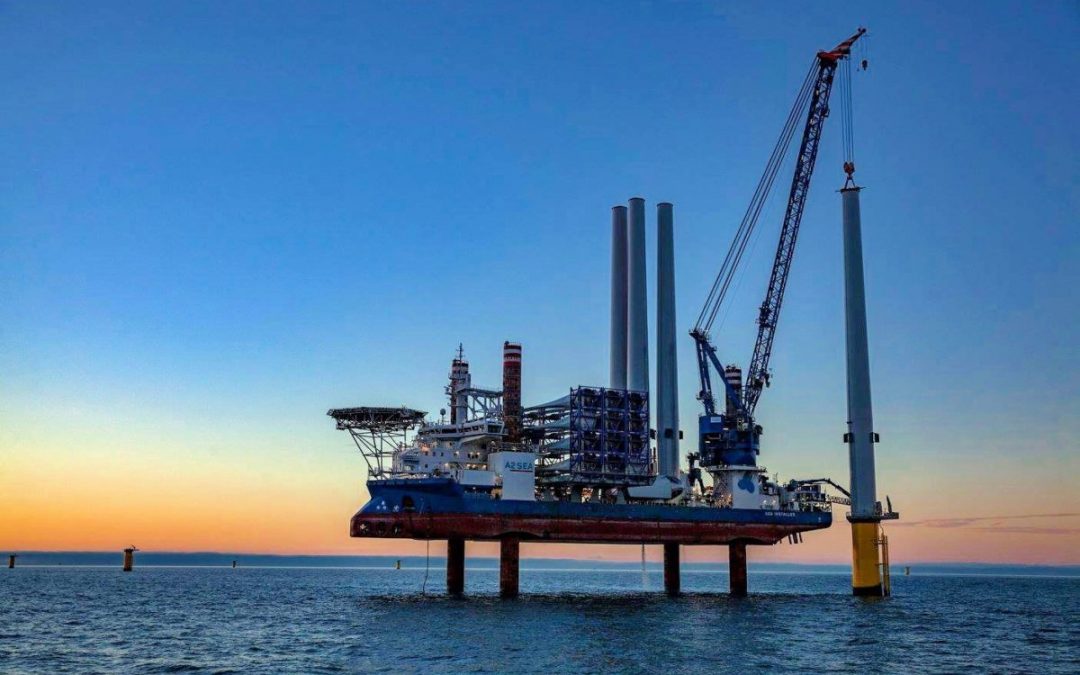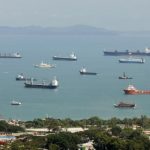With the effective setup of its 2MW revolutionary floating windy platform demonstration in open marine waters, the DemoSATH project has reached a critical milestone. The Windstaller Alliance employed an anchor managing vessel, the Normand Sapphire, as well as local tugboats to tow DemoSATH from the building site in the Port of Bilbao to the BiMEP test site, which was 11 miles distant.
Once at the 85m deep BIMEP site, which is 2 miles offshore in the Cantabrian Sea, the hook-up operation involved connecting the six pre-laid mooring lines to the structure’s single-point mooring turret.
Works in the BiMEP area are ongoing to finalize the connection of dynamic and static cable and pull-in to the DemoSATH’s turret which will enable the energy export to the onshore electrical grid. DemoSATH is expected to generate the equivalent electricity needs of 2,000 Spanish households a year.
The completion of this floating installation marks a major step forward in the project’s mission to harness wind power and generate sustainable electricity.
It’s thrilling to witness the DemoSATH project set sail, playing an integral role in the progression of renewable energy.” Sven Utermöhlen, CEO RWE Offshore Wind states: “The offshore installation of the DemoSATH project is an important milestone on our way to the commissioning of RWE’s second floating demonstration project. We see great potential for floating wind farms around the world as they unlock opportunities in countries with deeper coastal waters. As a floating pioneer, the firsthand learnings from our demonstration projects are key to us optimizing our upcoming commercial scale projects and securing their safe delivery.”
During the 2-year operational period at the BiMEP site, the SATH technology for floating offshore wind developed by Saitec Offshore Technologies will be tested, and the tasks related to its operation and maintenance requirements will be analyzed.
The project also aims to gain deeper insights into the midocean challenges in the open sea, particularly in the harsh conditions of the Cantabrian Sea. Additionally, the collection of data will provide valuable knowledge regarding the coexistence of the platform with the environment and other maritime activities.
The DemoSATH project benefits from the combination of Saitec Offshore Technologies engineering design skills, RWE’s expertise in the offshore wind industry, and the vast experience brought by Kansai Electric Power (KEPCO) who joined the project earlier this year.
In addition, the capabilities of multiple other companies involved and the institutional support from the Spanish Centre for the Development of Industrial Technology (CDTI) and the Basque Government institutions EVE and SPRI have ensured the success of the project. With the installation of the unit now complete, the DemoSATH project will enter a period of commissioning, which will be followed by the operational phase when electricity generation will commence. The floating wind platform has been designed and equipped to harness the power of the wind in deep coastal waters and convert it into clean, renewable energy.
This pioneering technology holds immense promise for reducing carbon emissions and contributing to the renewable energy goals of Spain and other countries around the world.






